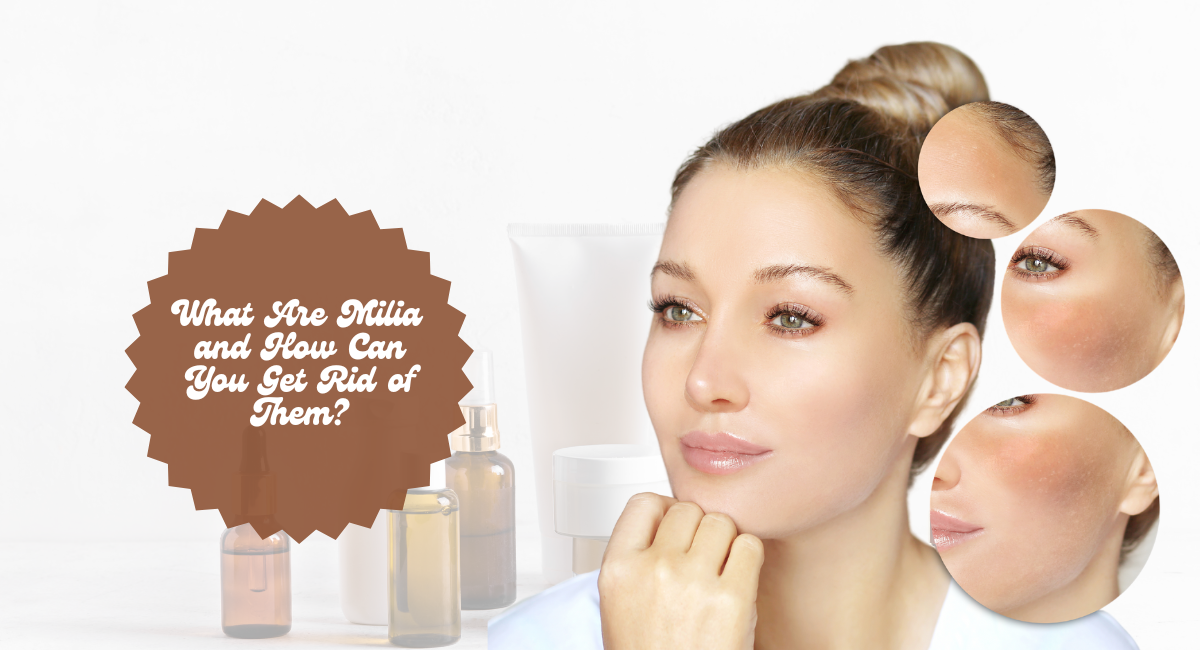While milia may not be a major skincare emergency, these pesky little white bumps can still disrupt an otherwise perfect complexion. Milia, which often appear out of nowhere, don’t cause long-term damage but can be frustrating to deal with.
The good news is they can fade on their own over time, but if you don’t want to wait, there are safe and effective ways to speed up the process. Read on to learn how to get rid of milia and achieve smooth, clear skin.
What Are Milia?
Milia are tiny, smooth white bumps that form when old skin cells get trapped beneath the skin’s surface instead of being shed naturally. These keratin cysts are often mistaken for whiteheads or acne but don’t cause any significant skin issues beyond appearance.
They typically form in clusters on the forehead, cheeks, nose, and around the eyes. While they may appear white to yellow in color, some milia can also feel itchy or present as raised patches of skin.
Read More: How To Stop a Pimple From Making Your Face Swell?
What Causes Milia?
While the exact cause of milia in newborns is still unknown, several factors can trigger milia in adults. Primary milia occur due to trapped skin cells, while secondary milia can develop from skin injuries or damage, such as:
- Sun damage
- Rashes, burns, or blisters
- Chemical treatments
- Prolonged use of ointments or steroid creams
- Genetic conditions
- Autoimmune responses
Milia around the eyes are often caused by heavy eye creams with thicker textures that clog pores. Similarly, comedogenic skincare products can also contribute to milia formation.
How To Get Rid Of Milia?
- Don’t Pick or Pop Them: No matter how tempting it may be, avoid picking at milia. Trying to pop them can lead to scarring, discoloration, or infection, causing more harm than good.
- Use the Right Cleanser: A solid skincare routine starts with a gentle cleanser. Choose a formula free of harsh or pore-clogging ingredients. Cleansers with mild exfoliating acids like AHAs and BHAs can help shed dead skin cells, preventing new milia from forming. Using a cleanser regularly helps keep your skin clear and refreshed.
- Exfoliate Gently and Regularly: Exfoliation is key to removing old skin cells and keeping pores clear. Gentle chemical exfoliants, like salicylic and glycolic acids, help dissolve trapped keratin under the skin. Exfoliate once or twice a week, depending on your skin’s sensitivity, to prevent milia formation.
- Consider a Chemical Peel: For stubborn milia, chemical peels can accelerate skin cell renewal. Whether done at home or by a professional, chemical peels tackle uneven texture, discoloration, and milia. Opt for peels containing gentle acids, such as glycolic or salicylic acid, to avoid irritating the skin further.
- Try a Retinoid: Retinoids are excellent for speeding up cell turnover and shedding skin cells. They not only fight signs of aging but also prevent milia by keeping pores clear. However, use retinoids cautiously when combining with exfoliants and peels to avoid skin irritation.
- Switch Out Your Eye Cream: Heavy eye creams can lead to clogged pores and milia around the eyes. Switch to a lighter, non-comedogenic formula to hydrate the delicate eye area without causing bumps.
- Never Skip Sunscreen: Sunscreen is crucial for protecting your skin from UV damage, which can enlarge pores and contribute to milia. Choose a broad-spectrum, non-comedogenic sunscreen with at least SPF 30 to protect your skin while keeping pores clear.
FAQs
How Long Do Milia Last?
In newborns, milia typically disappear within a few weeks. For adults, it can take a few weeks to months for milia to fade.
Can Milia Be Extracted At Home?
Milia removal should not be attempted at home. Extraction requires professional tools and techniques to avoid infection, scarring, or further skin damage.

